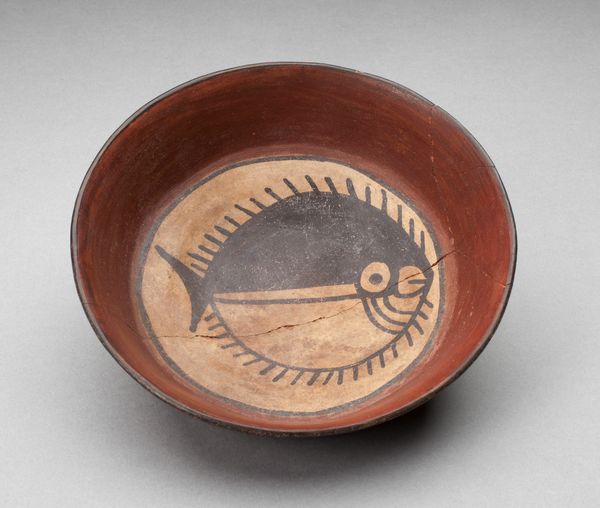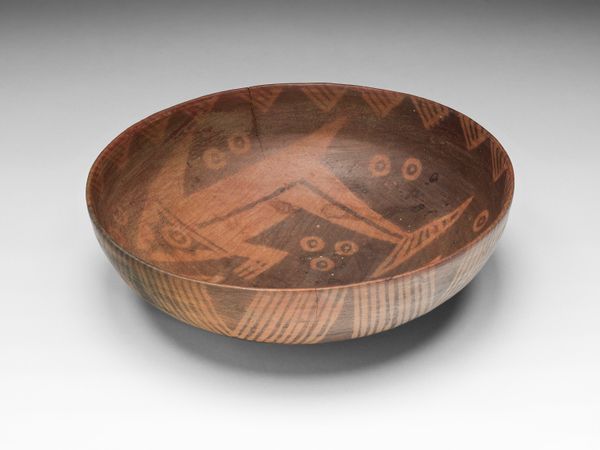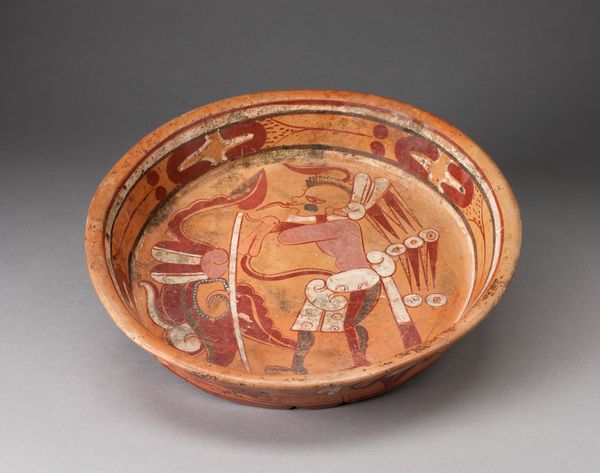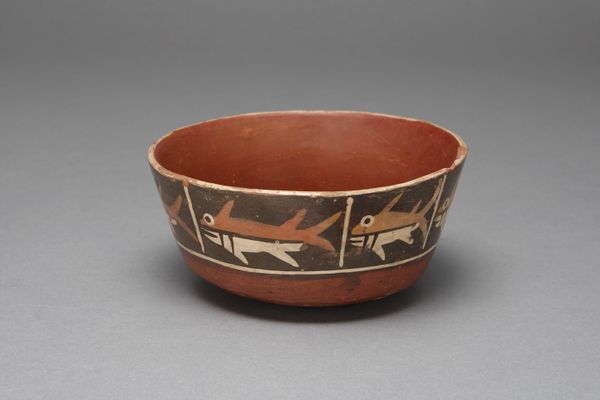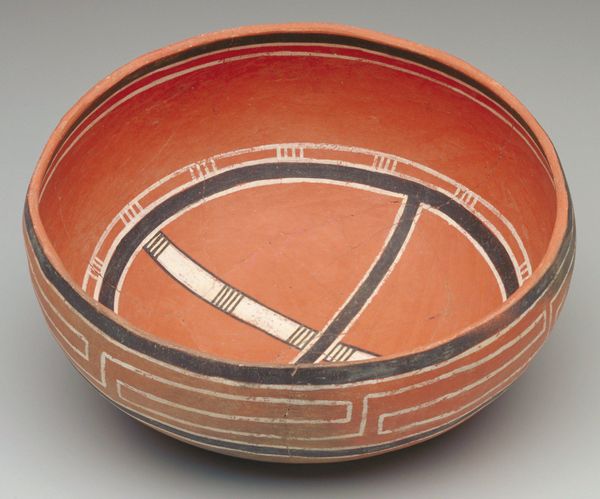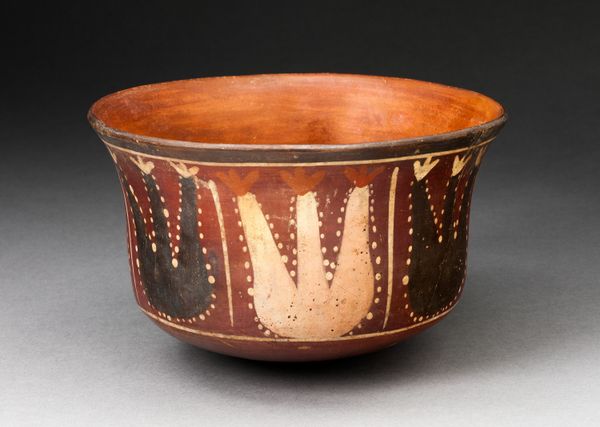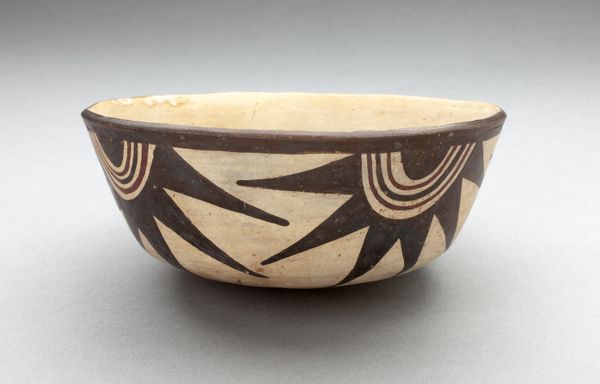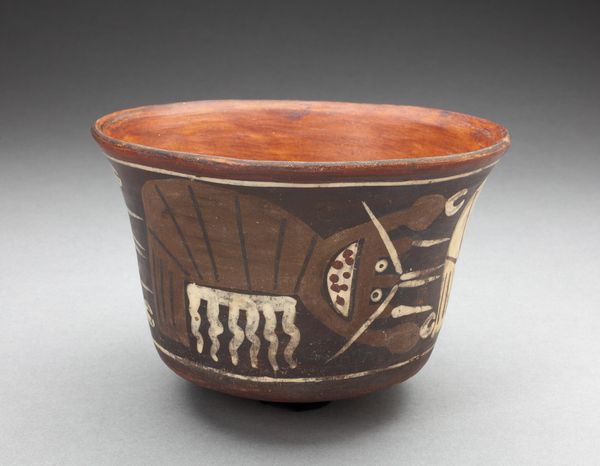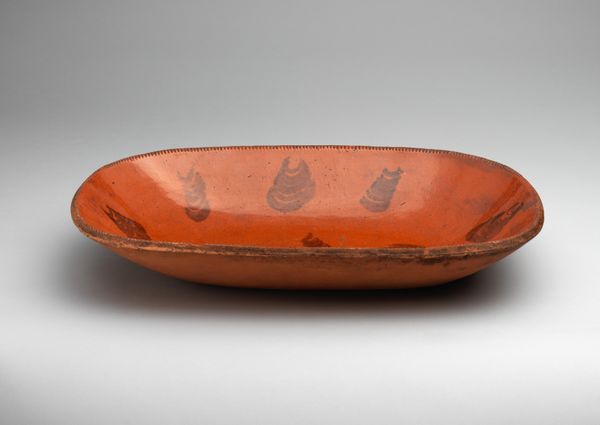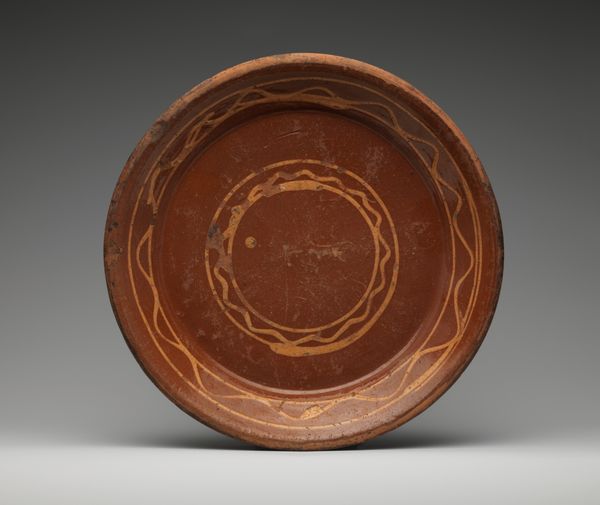
ceramic, earthenware
#
pottery
#
ceramic
#
figuration
#
earthenware
#
indigenous-americas
Dimensions: 4.5 × 16.5 cm (1 3/4 × 6 1/2 in.)
Copyright: Public Domain
Curator: What a striking piece. This is a ceramic plate from the Nazca culture, dating roughly from 180 to 500 AD. Its interior depicts a pair of sharks. Editor: My first impression is how elemental the design feels, despite the representational imagery. There's such a stark contrast between the reddish earthenware and the cream slip where these sharks are painted. Curator: Absolutely. For the Nazca people, pottery wasn't merely functional; it was a crucial canvas for expressing their worldview. This piece, currently held at the Art Institute of Chicago, tells us something about their relationship with the marine world. Sharks were powerful symbols. Editor: The figures are interesting: they look almost cartoonish. Those exaggerated fins and teeth lend the figures a kind of abstracted violence. What is that central band depicting? Curator: The central band is thought to perhaps represent internal organs or power centers within the shark. What’s fascinating is that, in Nazca society, such imagery was less about simple representation and more about conveying essential characteristics or spiritual power. These would appear to be depictions of mythological sharks rather than exact replicas of observed creatures. Editor: I find the symmetry fascinating, mirroring those shark forms along a central horizontal axis. Also the concentric effect of the inner circle surrounded by the earthenware is hypnotic. There's a simplicity that speaks volumes about their sophisticated approach to design. Curator: Indeed. This plate likely served ritualistic purposes, acting as a vessel for offerings or ceremonial meals. Through these acts, they were directly invoking the power and essence of the depicted creature and connecting with something larger than themselves. Editor: That emphasis on function as intertwined with visual form elevates this from a mere object to a culturally resonant artifact. Even just the geometric rendering—it's powerful, really makes an impression! Curator: Precisely. By understanding both the form and function, we begin to truly appreciate the cultural complexity and artistic vision of the Nazca people. Editor: It definitely brings a deeper sense of human connection to a society that is otherwise lost in time.
Comments
No comments
Be the first to comment and join the conversation on the ultimate creative platform.

